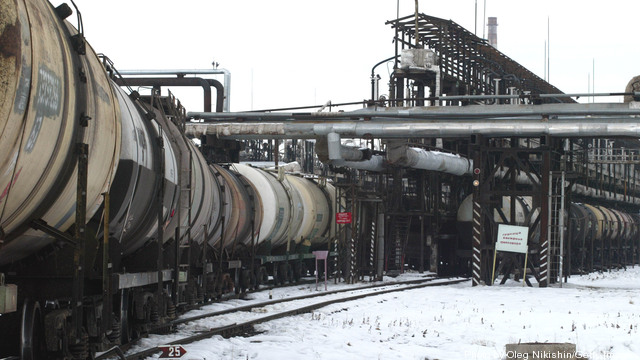
An industry source told Breaking Energy last November the two greatest challenges companies operating in Alberta’s oil sands region face are access to markets and skilled labor. Alberta Energy Minister Ken Hughes elaborated on these and other issues during a recent phone call.
In a scenario where the Keystone XL Pipeline is not approved by the Obama Administration, Minister Hughes said companies have lots of different options and that rail has become “compelling.” Although generally less efficient than transporting oil via pipeline, rail could be used to bring Canadian oil as far as the Gulf Coast and maybe the West Coast and Mid-continent as well, he said.
Companies “also have other options in terms of pipelines to Eastern Canada,” Hughes told Breaking Energy, with 600,000 to 800,000 barrels per day currently being piped into Central and Eastern Canada. TransCanada is converting a natural gas line to carry oil possibly as far as St. John, New Brunswick, he said, and Enbridge is working to reverse its Line 9 “in order to allow for the eastbound transportation of incremental western Canadian crude oil,” according to the company’s website.
With regard to accessing Asian markets, “it’s all about getting to tidewater,” Hughes said, and the Energy Ministry is doing work to build relationships and secure pipeline access to Canada’s West Coast. In the coming years, “energy demand growth with be from the Asia Pacific region and it will be imperative for Alberta to access that market.”
Hughes also stressed “every barrel of oil that gets sold from Canada has substantial US content,” with many equipment, steel and service companies based there. “The two economies are very much integrated,” he said
Companies are scrambling to get their oil into higher value markets because market pressure and oversupply in Western Canada are suppressing the price with the lost opportunity cost for producers and the province running into the billions of dollars. As recently reported by Breaking Energy, Cenovus Energy currently receives $25 to $30/bbl more for oil transported via barge to the US West Coast.
Accessing Skilled Labor
As oil sands production increases, getting the right people to spend months at a time in remote locations north of Edmonton is an ongoing challenge for companies. Minister Hughes pointed out this is not a new phenomenon, “Alberta has a long history of needing people and capital to come from outside to develop its resources,” he said.
But the labor issue is a constraint, he admitted, and explained that as an entrepreneur before getting elected he saw how all industries can be affected by a tight workforce. Hughes said the Alberta Energy Ministry is working with the US Ambassador to organize a job fair and website to open employment opportunities for returning service people. “They have good skills and discipline and we have need for people to learn and contribute,” if people have trades as a background there might be opportunities in Alberta’s oil patch.
New Energy Regulator
Alberta is forming a new regulatory body for oil, gas and coal designed to streamline the permitting process and generally increase efficiency, but critics fear the new system could water down environmental oversight of these extractive industries.
Hughes sees the new regulator as a “once in generation opportunity” to step up to next generation regulatory practices. He insists the system will be “effective and efficient without environmental compromise.”
Time will tell, but in the meantime formation of the new regulator is progressing on schedule – it should be in place this June – and the board of directors and CEO will soon be announced, Hughes said.
